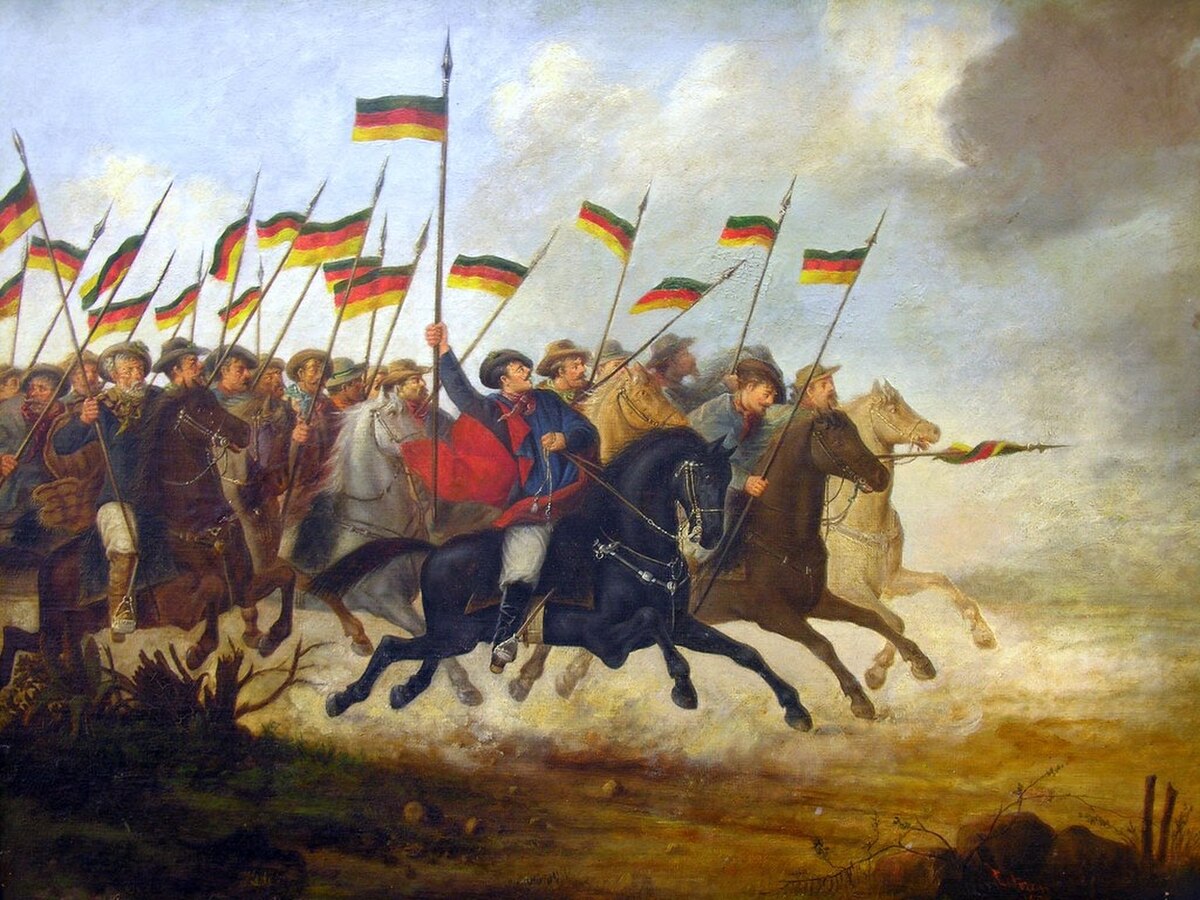
Ragamuffin War
Rio Grande do Sul, BrazilThe Ragamuffin War was a Republican uprising that began in southern Brazil, in the province of Rio Grande do Sul in 1835. The rebels were led by generals Bento Gonçalves da Silva and Antônio de Sousa Neto with the support of the Italian fighter Giuseppe Garibaldi. The war ended with an agreement between the two sides known as Green Poncho Treaty in 1845.
Over time, the revolution acquired a separatist character and influenced separatist movements throughout the entire country such as the Liberal Rebellions in São Paulo, Rio de Janeiro, and Minas Gerais in 1842, and the Sabinada in Bahia in 1837. The abolition of slavery was one of the demands of the Farrapos movement. Many slaves organized troops during the Ragamuffin War, the most famous of which is the Black Lancers Troop, annihilated in a surprise attack in 1844 known as Battle of Porongos.
It was inspired by the recently ended Cisplatine War, maintaining connections with both Uruguayan leaders as well as independent Argentine provinces such as Corrientes and Santa Fe. It even expanded to the Brazilian coast, in Laguna, with the proclamation of the Juliana Republic and to the Santa Catarina plateau of Lages.
